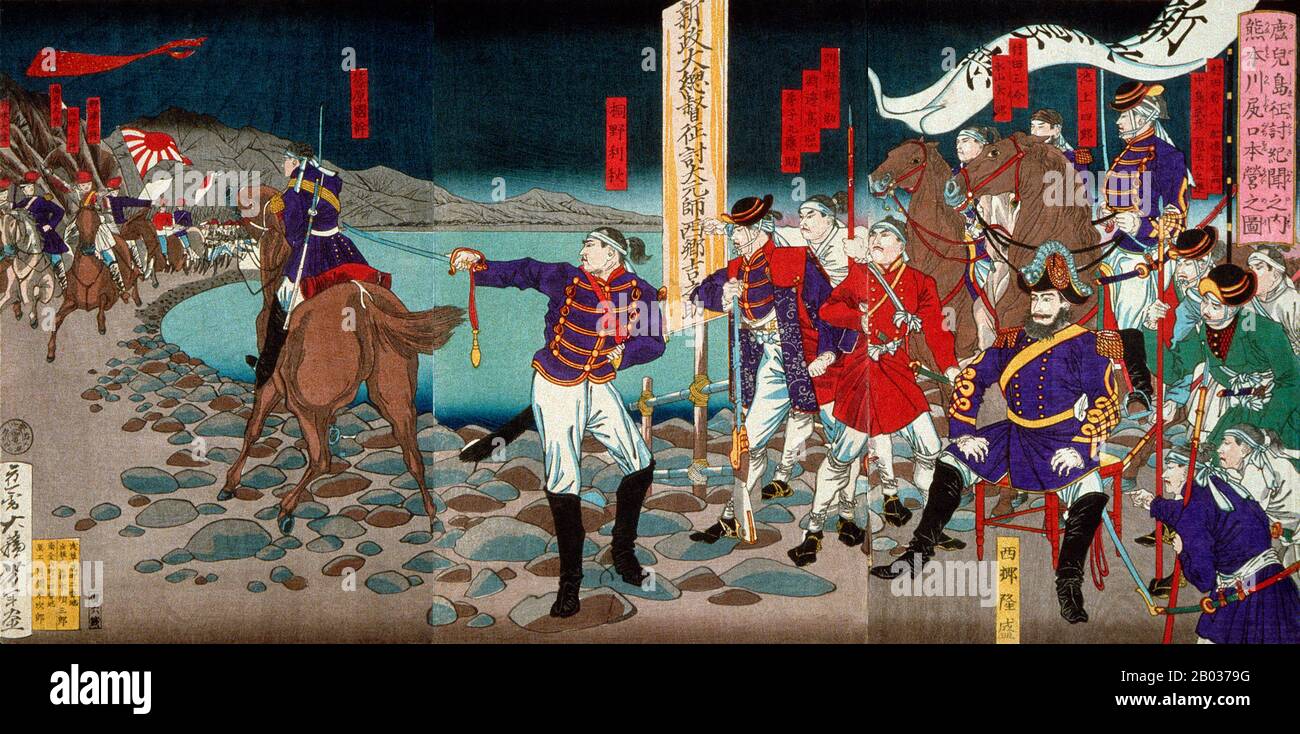The Satsuma Rebellion was a revolt that occurred nine years into the Meiji Era. After various military reforms had led to the lessening of samurai power and resulted in many unemployed samurai in the Satsuma Domain, Saigo Takamori, one of the senior Satsumi leaders, became worried about political corruption and the future role of samurai warriors. Saigo and his men eventually revolted in January 29, 1877, leading 20,000 to 30,000 samurai against the Japanese Imperial Army. The rebellion was decisvely crushed nine months later in September during the Battle of Shiroyama, the samurai outnumbere

Image details
Contributor:
CPA Media Pte Ltd / Alamy Stock PhotoImage ID:
2B0379GFile size:
49.7 MB (3.2 MB Compressed download)Releases:
Model - no | Property - noDo I need a release?Dimensions:
5917 x 2933 px | 50.1 x 24.8 cm | 19.7 x 9.8 inches | 300dpiPhotographer:
Pictures From HistoryMore information:
This image could have imperfections as it’s either historical or reportage.
The Satsuma Rebellion was a revolt that occurred nine years into the Meiji Era. After various military reforms had led to the lessening of samurai power and resulted in many unemployed samurai in the Satsuma Domain, Saigo Takamori, one of the senior Satsumi leaders, became worried about political corruption and the future role of samurai warriors. Saigo and his men eventually revolted in January 29, 1877, leading 20, 000 to 30, 000 samurai against the Japanese Imperial Army. The rebellion was decisvely crushed nine months later in September during the Battle of Shiroyama, the samurai outnumbered 60-to-1 by the Imperial Army. Saigo committed seppuku and killed himself rather than surrender, thus ending the last of a series of armed uprisings against the new government and effectively ending the samurai class.